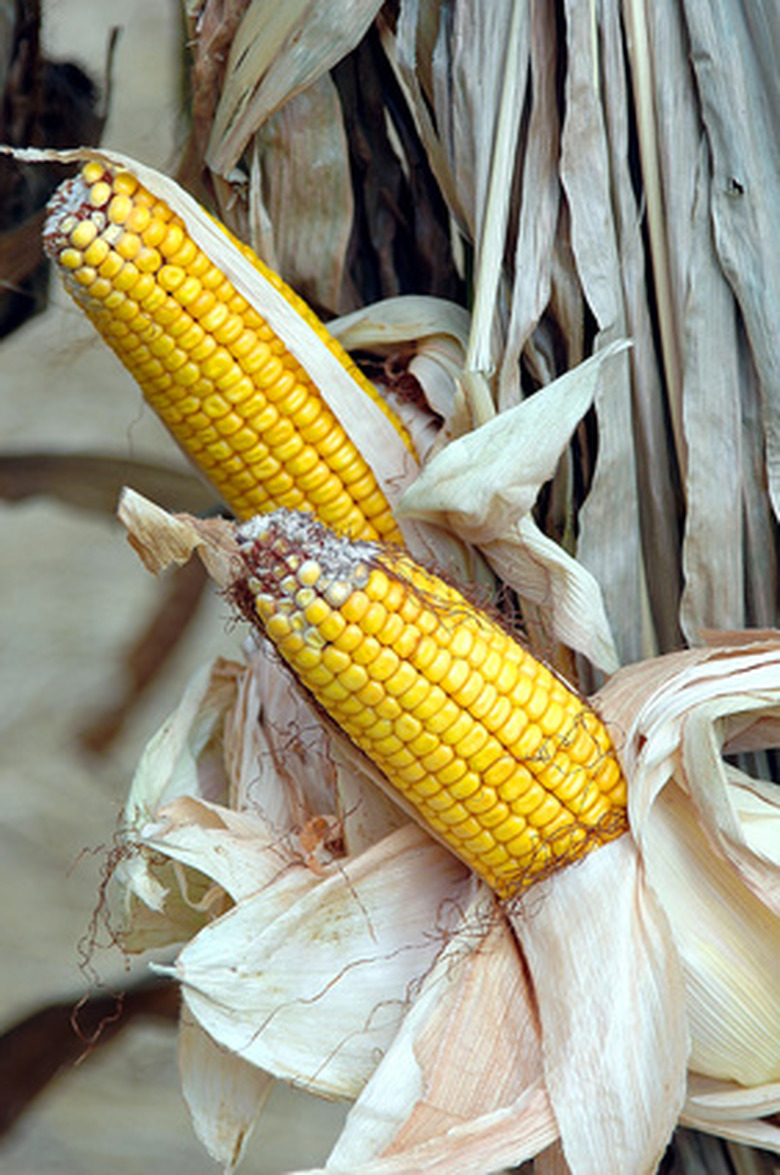How Plants Depend On Each Other
Companion planting is the modern name for the old gardening wisdom that describes which plants should grow together. The Native American system called "three sisters" recommends growing corn, beans and squash together in small hills. Science now acknowledges that these three plants are biologically beneficial for each other, each providing something the other plant needs.
Companion Planting
"Companion planting is based on the idea that certain plants can benefit others when planted in near proximity," according to the National Sustainable Agricultural Information Service. The benefit for plants can be pest control, higher yield or nitrogen retention. Large-scale sustainable agriculture programs refer to companion planting as intercropping. Home gardening wisdom such as "put garlic near your roses" is companion planting.
- Companion planting is the modern name for the old gardening wisdom that describes which plants should grow together.
- The Native American system called "three sisters" recommends growing corn, beans and squash together in small hills.
Pest and Plant Suppression
Plants such as the African marigold secrete chemicals from roots, stems or leaves that suppress or repel harmful insect pests from neighboring plants. Marigold releases thiopene, which repels a species of harmful worms called nemotodes. Black walnut trees release a chemical compound called juglone. It prevents certain plants that are detrimental to walnuts from growing nearby.
Spatial Companions
Shade-loving plants such as leafy greens and squash depend on taller vegetables such as corn to provide shade. This mutual dependency also helps to regulate pest problems. The shade provided by corn may disorient the squash vine borer and thus increase squash yields. The prickly squash vines possibly deter raccoons from eating the tender corn.
- Plants such as the African marigold secrete chemicals from roots, stems or leaves that suppress or repel harmful insect pests from neighboring plants.
- The prickly squash vines possibly deter raccoons from eating the tender corn.
Farmscaping
When people design and create habitats for the mutual dependence of plants and animals it is called "farmscaping." Cover crops such as rye exude chemicals that suppress weeds near tomatoes, broccoli and other vegetables. Mutually dependent plants that help each other include strawberries and spinach, onions and tomatoes, cucumbers and sunflowers, and lettuce and radishes. Beans provide the essential nutrient nitrogen and are good companions for all vegetables.
Mutual Benefit
Vegetables that provide mutually beneficial chemical interactions include bush beans planted with celery and summer savory; the cabbage family planted near beets, spinach and chard; and bush beans grown near Irish potatoes, cucumber or corn. The specific scientific identification of why these plants do well together is not always known, and proof has been a matter of trial and error. The National Sustainable Agricultural Information Service provides companion planting chart.
